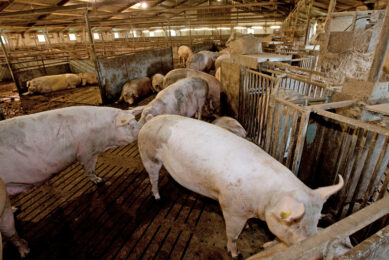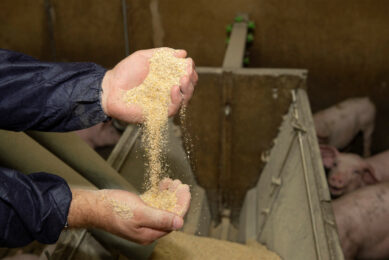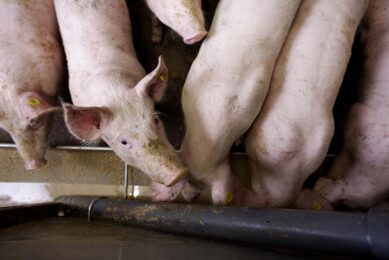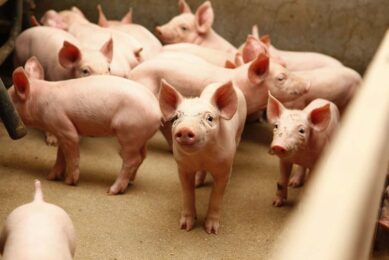Making high-protein feed ingredients from pig waste
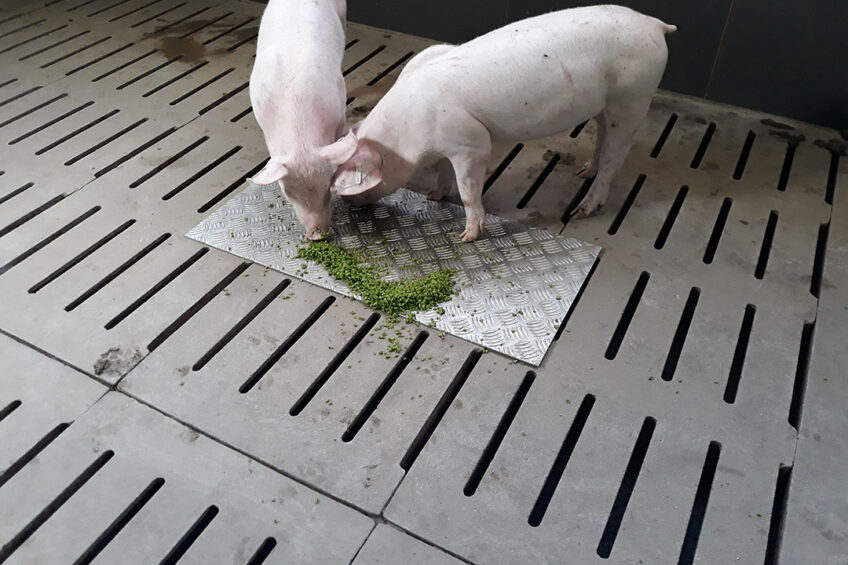
A group of scientists examined if duckweed could be used to convert nutrients from pig manure into a protein feed ingredient.
Sustainability is a prime concern in agriculture these days due to environmental pressures, as well as the rising cost of fuel, fertiliser and other farm inputs. If the livestock farming sector does not find ways to lower environmental impact and costs, some believe that lab-grown meat or plant-based protein production could eclipse livestock production altogether in some parts of the world.
Recycling and reuse
One important aspect of sustainability is recycling and reuse where possible. Many approaches are being tried to reclaim nutrients from livestock manure, but aside from various chemical or mechanical means, a more simple and elegant solution is also being closely examined. That is: what if plants could be harnessed on every farm to convert nutrients from pig manure into a nutrient-rich livestock feed ingredient?
Duckweed
This is what a group of scientists at Ghent University and the Provincial Research and Advice Centre for Agriculture and Horticulture (Inagro vzw) in Belgium are investigating. Building on previous research, they have published a study in which they grew a plant named Lemna minor (duckweed) in water containing some liquid pig manure at a site in Flanders and analysed how much of the nutrients were absorbed by the plants, optimum plant growing conditions, plant protein content and more.
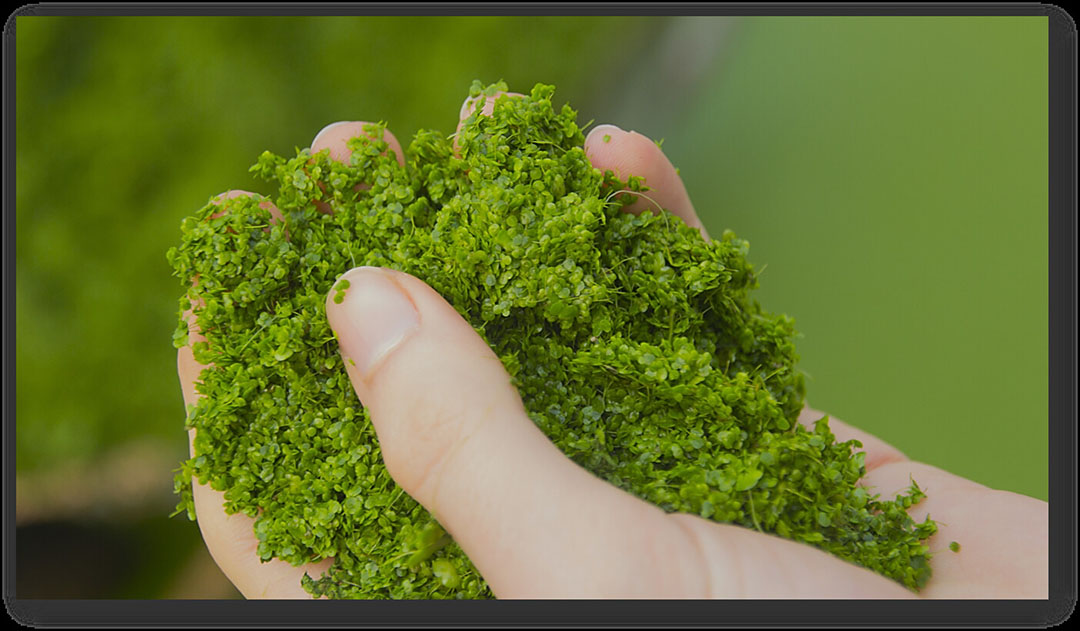
History in livestock
Indeed, according to a November 2021 review of the potential for duckweed published by scientists based in South Korea, these plants are such a good protein source that they “could replace soybean meal and are expected to be used as substitute” in feed. In fact, because of its high protein content and other nutrients, duckweed has a history of being fed to various types of livestock that goes back hundreds of years in some parts of the world. It has been fed to cattle, chicken, fish, sheep and waterfowl.
Duckweed grown in pig manure
Duckweed grown in pig manure is of interest because pig manure is liquid and easily accessible, stored on farms in storage tanks (called lagoons in many parts of the world). In addition, because pig production in Europe and many other parts of the world is intensive in some local areas, there are serious concerns about how to manage large volumes of pig manure, the effects of excess nutrients being applied to fields, odour and more.
Life Lemna project
Another research project looking into growing duckweed on pig farms began in 2016, when the EU, government and partners (such as a private research facility in Spain called AINIA) began the Life Lemna project. This project studied the growth of duckweed on a demonstration farm in Spain. The team refined plant growing methods and created an electronic cultivation tool. The tool was then used on EU farms to calculate the economic feasibility of the duckweed cultivation system to valorise pig slurry digestate as a nutrient source in different scenarios.
“Since the project was completed, the tool has been applied by more than 50 users from the EU interested in evaluating the feasibility of this technology,” says Dr Alfredo Rodrigo, a senior scientist at AINIA.
Belgian research
In the Belgian study, 3 pilot-scale outdoor duckweed growing systems were monitored for nine weeks by Dr Reindert Devlamynck and colleagues Jan Leenknegt, Marcella Fernandes de Souza, Liesbeth Jacxsens, Mia Eeckhout and Erik Meers.
The team set up a pilot duckweed outdoor growing system in the month of August and monitored it over 9 weeks to determine accumulation trends for various minerals, compare duckweed mineral content with the standards for animal feed, and more. The sides of the vats were covered with black plastic foil to exclude light and therefore prevent algae growth. The open tops of the vats were covered with screens to prevent insect entry. Air temperature, humidity, light and other parameters were monitored daily.
Swine manure wastewater
Overall, the scientists found that duckweed has the potential to be used to treat swine manure wastewater while producing a mineral- and protein-rich feed ingredient – with a protein content in this study of 35% dry weight.
However, because pig manure does not provide the best conditions nor contain all the minerals required by duckweed within ideal ranges, it is a less than optimal growing medium for the plant.
It should also be noted that these trials were designed so that nitrogen and phosphorus would stay high in order to promote duckweed growth.
Not enough copper
And while the mineral composition of the duckweed in this study was rich in manganese (Mn), zinc (Zn) and iron (Fe), it did not contain enough copper (Cu) for feeding to swine. Potentially-harmful heavy metals such as lead (Pb) were below the feed limits set by EU feed directives for swine, but the zinc content surpasses the set maximum levels in complete feed for piglets and sows.
On farm feasibility
To grow duckweed on farms using pig manure would require investment in containers and equipment to operate the system and harvest the plants, labour for ongoing harvest, duckweed nutrient testing and so on. These costs could be recouped over time and would decrease if turnkey systems became available and widespread.
Devlamynck calls the question of whether it would be financially worthwhile for farmers to add heat to extend the duckweed growing season or have it happen all year round, “interesting”.
LemnaPro
He and his colleagues are looking into this and other questions about duckweed cultivation at Inagro and Ugent as part of the ‘LemnaPro’ project which is supported by Flanders Food and VLAIO, the Belgian government Agency for Innovation & Entrepreneurship. “An exact economic analysis of this matter has not yet been carried out,” says Devlamynck, “but we are planning to publish a report.”
3 parameters
3 parameters are important for the economic analysis: the value of duckweed production, the cost of added heat and the rate of duckweed production at a given temperature, with optimal growth happening at 25-32°C. “During winter, daylength will also limit the production, meaning extra light and thus electricity has to be added,” says Devlamynck.
Waste heat is considered lost energy and could be an interesting option to cut the energy costs
He notes, however, that at this point it could easily be concluded that feed prices would not be enough to cover the energy costs. He states that while “today, the cost of energy has peaked,” at the same time, “the environmental impact of expending energy is a good reason to try to minimise excess energy consumption. Waste heat is considered lost energy and could be an interesting option to cut the energy costs [of duckweed production]. For example, digesters with a combined heat-and-power unit can produce heat which cannot always be fully utilised by every operator. In an urban or industrial setting, waste heat can always be found”.
Greenhouse structures
Besides waste heat, greenhouse structures could also be used to prolong the growing season and help retain more of the heat added to the duckweed tank. That said, Devlamynck notes that heating a full greenhouse for one level of duckweed would be quite inefficient but that multi-layer cultivation might work.
For his part, Rodrigo believes greenhouse cultivation or heaters could be used to extend the growing season in cold areas but says this strategy would only be profitable if the price of the final biomass product is high – for example, if the duckweed produced could somehow be used for human food and not livestock feed.
Fresh feed potential
Because drying is energy-intensive, incorporation of fresh duckweed into liquid feed is possible.
Rodrigo notes that fresh duckweed as feed was examined in the Life Lemna project but says “we are aware that making the use of fresh lemna and dry compound feed compatible on pig farms can be complicated in terms of the homogeneity of the diet composition, excess water, daily internal handling of fresh lemna, and so on. This is an issue that would need to be studied further.”
Devlamynck and his colleagues are continuing to investigate how fresh duckweed can be added to a liquid feeding system so that the feed flows properly through the pipes. They are also examining if ensiling would be feasible for duckweed storage.
Potassium (K) will most likely accumulate the fastest of all other elements in the water, making it unsuitable for duckweed cultivation after a while
Nutrient testing
Any source of feed must be monitored over time. Devlamynck says the protein content of duckweed would likely remain quite stable over time, as long as the nitrogen being added was stable, but there is less control over other elements.
“For example, potassium (K) will most likely accumulate the fastest of all other elements in the water, making it unsuitable for duckweed cultivation after a while,” he explains. “At that point, replenishment of the growing medium is required. This year, in a large-scale pilot, at the point of replenishment we will test if an accumulation of other elements has occurred.” He adds that inexpensive techniques like electric conductivity measurements can be used to monitor nutrient levels in the cultivation water.
Global use?
In terms of how duckweed production could be used on a global scale, Rodrigo believes funding would be required to support adoption. He adds that the Life Lemna project showed that more work is needed to solve the scaling-up of some elements of the system to make it more cost effective, to go deeper into genetic variability and to look at technologies like greenhouses and vertical cultivation.
Devlamynck notes that areas of the planet with warmer climates have an advantage because duckweed productivity is much higher at higher temperatures and land costs are also generally lower. “On the other hand, regions like Flanders and the Netherlands have intensive animal (and thus manure) production, combined with incentivised nutrient management,” he says. “The opportunity to apply manure to duckweed treatment ponds instead of onto arable land has more economic potential than its feed value in these regions. So, in conclusion, no matter what climate conditions you have, the economic outlook is potentially favourable.”
Duckweed as animal feed
- Duckweed Lemna minor is a small floating freshwater plant that has an extremely high growth rate.
- It only takes 1.34 to 4.54 days for the plant to double in mass under optimal conditions.
- Growth rate depends on mainly on light, temperature, growing system and system management.
- Duckweed is very high in crude protein, 35-45% dry weight.
- Unlike most other feed crops, the entire plant is edible.
- Duckweed has been fed to various types of livestock going back hundreds of years in some parts of the world. It has been fed to cattle, chicken, fish, sheep and waterfowl.



